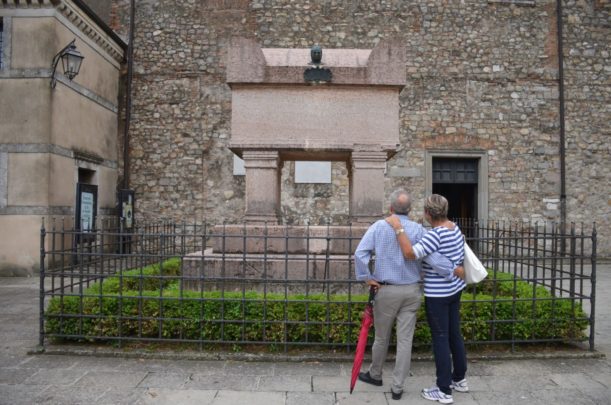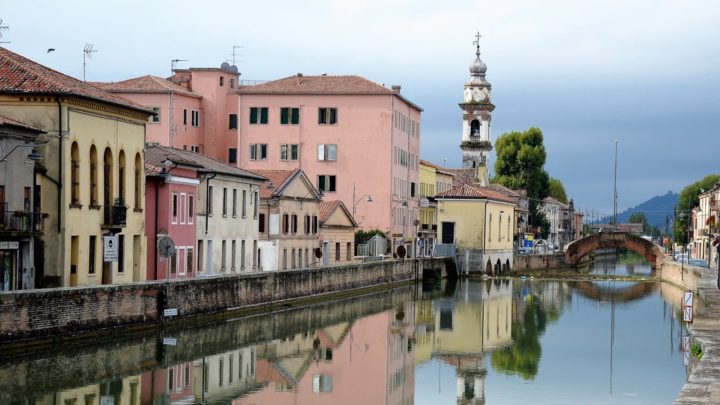‘Exploring the land of the poets in Arquà Petrarca, Italy’

Today we decided on Arquà Petrarca, a small village on the lower slopes of the Euganean Hills in northeastern Italy. For some reason, over the centuries, this region has attracted poets. Byron and Shelley are the names that will ring a bell with most, but this village is actually named after another, often Anglicised to Petrarch. His credits are many. His rediscovery of some of Cicero’s texts is credited with being the starting gun of the Renaissance in the 14th century and he is often credited with being the first Humanist.
Born in Arezzo, Francesco Petrarca and his family later travelled to Avignon, chasing the papacy who had moved there, and he became familiar with the area, once climbing Mont Ventoux. The reason? Composed in a letter some time after the fact, Petrarca claimed to have been inspired by Phillip V of Macedon’s ascent of Mount Haemo and, also, that an aged peasant had told him that nobody had ascended Ventoux before or after himself, 50 years before, and warned him against attempting to do so.
Petrarca is also labelled as the first tourist of modern times because he travelled solely for pleasure around northern Italy and France but, for his latter years, he chose to rest in Arqua where he died and his home has been made into a museum.
We’re here because we liked the look of the village as we rushed past the previous day and it has a trickle of tourists that obviously sustain some of the local economy. Labelled one of the most beautiful villages in Italy, it certainly makes an effort to keep clean and tidy and even has a designated parking area that’s only 200 metres from the central piazza. The reality is more like the two guys in the small main piazza who were sitting there watching the world go by when we arrived and were still there more than an hour later when we departed. It’s a sleepy hamlet but it has a nice atmosphere and we take time out for an ice cream beside a touristy knick-knack shop and with a 16th-century fresco embedded in the wall opposite that’s on the higher side and watch the world, or, at least, part of it, sidle by our seats on the sidewalk.
Strange white modernistic sculptures are scattered around featuring men in cowering poses seemingly wrapped in bandages; we still haven’t worked those out! They’re by an artist who uses the pseudonym Rabarama, an attractive lady whose real name is Paola Epifani and naked bodies with assorted things wrapped around them are her speciality.

We pass by Petrarca’s tomb, raised on a pedestal with a couple admiring it and then, unknowingly, walk past his final lavishly frescoed residential abode that’s situated up an adjacent laneway. The interior of the church has historic faded frescoes but, after seeing some superb examples elsewhere, we don’t tarry long and head off towards Battaglia Terme, whose hot springs have attracted tourists. For centuries.

It sits on the flats below the Eugenean Hills and it came about, and probably still survives, because of the sole natural thermal cave in the Euganean area, popular with spa type people and, its proximity to navigable water, evidence of which can be seen with the narrow boat style of craft popular in English canals shown here in the local museum in various stages of salvage.
There’s also a couple of other tug-type boats freshly painted but the museum isn’t open so we head off beside the picturesque waterway. The town’s origins can be traced directly to 1189 when the first canal, Battaglia, was dug and paper and fabric production fuelled its economy for centuries alongside the spas.

We have to content ourselves with the canal because the impressive 350-room Castello Del Catajo and its 40 hectares aren’t available to us today either. Still, there’s a couple of ladies’ attire shops that keep Lorraine interested apart from the budding storm in the background that brings some lovely atmosphere into the photography.








 Proudly Australian owned and operated
Proudly Australian owned and operated